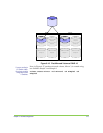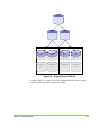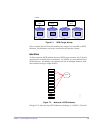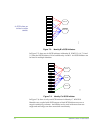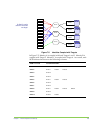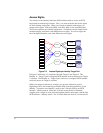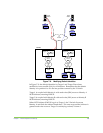
7-2 SANRAD V-Switch CLI User Manual
Introduction to Volume Exposure &
Security
iSCSI Targets
Data is able to be transferred via iSCSI when an iSCSI initiator establishes a TCP
connection with an iSCSI target.
The iSCSI initiator resides in the host computer and is configured by
the system administrator.
The iSCSI target resides in the V-Switch and is created by the volume
manager.
To enable iSCSI communications over TCP, the system administrator
configured portals during the initial V-Switch configuration, consisting of a
network port IP address and its assigned TCP port. Please see Chapter 4
“Configuring iSCSI Portals”for more details. Each configured portal is
automatically attached to all iSCSI targets created. Typically, there are few
portals and many targets.
Both iSCSI initiators and targets have a World Wide Unique Identifier (WWUI) of
up to 256 free form characters, e.g. www.sanrad.vswitch1.target1.
You create a V-Switch target by assigning an alias and WWUI to it.
You assign a Logical Unit Number (LUN) to a volume and then attach the LUN
to an iSCSI target to expose the volume to hosts.
When creating targets, keep in mind that:
Each target can have multiple LUNs.
Each target must have LU0 to be functional.
Each target should be exposed by only one V-Switch in a cluster.
Each target can be accessed by multiple hosts.
There are two ways to create a LUN and target:
Assign a LUN and create a target together.
Create targets first and later assign LUNs to the pre-created targets.
The V-Switch in Figure 7-1, contains three iSCSI targets: Target 1, Target 2 and
Target 3. It has two portals: (IP1, 5003) and (IP2, 5003). Target 1 and Target 2
have only one volume attached to each. Therefore, each volume is
automatically assigned LU0. Target 3 has two attached volumes, LU0 and LU1.






